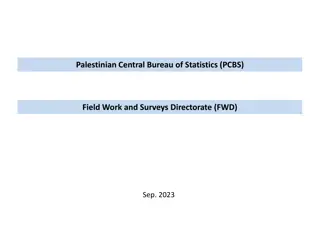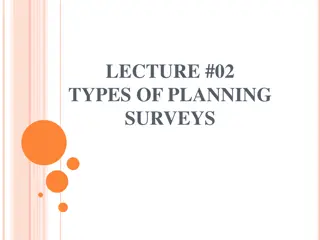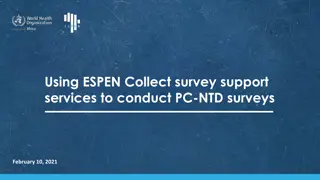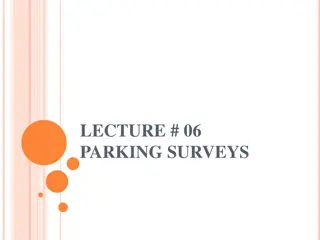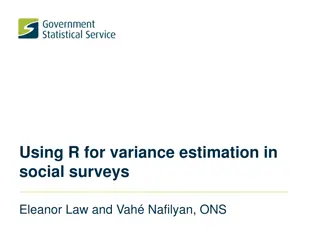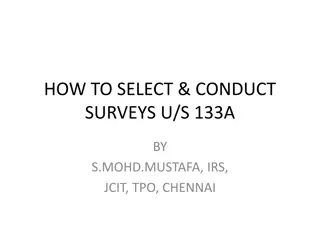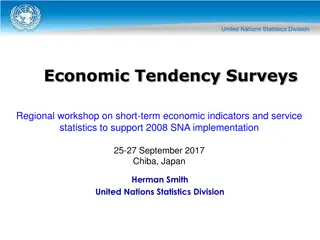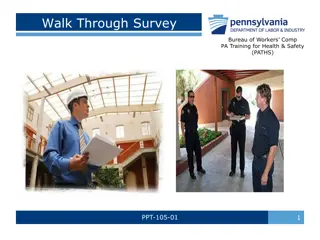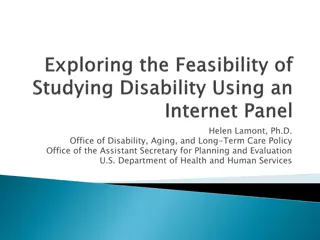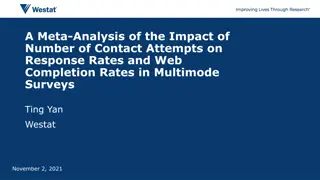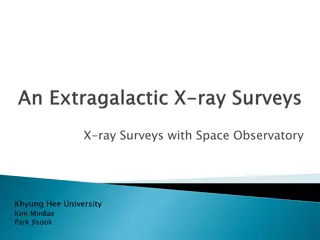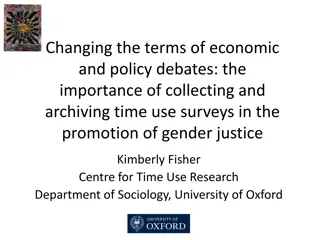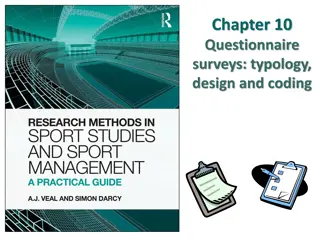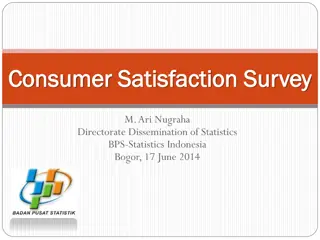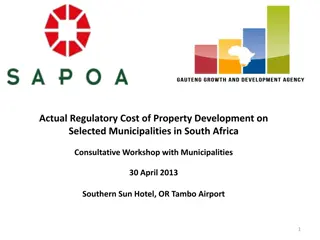
Revolutionizing Survey Research in Information Management
Explore the evolving landscape of survey research in the Information Management field, addressing dilemmas, data collection approaches, communication strategies, error sources, participant motivation, response terms, and various survey methods. Gain insights on self-administered surveys, designing questionnaires for maximum impact, and more. Stay informed about the latest trends and challenges shaping the future of survey research.
Download Presentation

Please find below an Image/Link to download the presentation.
The content on the website is provided AS IS for your information and personal use only. It may not be sold, licensed, or shared on other websites without obtaining consent from the author. If you encounter any issues during the download, it is possible that the publisher has removed the file from their server.
You are allowed to download the files provided on this website for personal or commercial use, subject to the condition that they are used lawfully. All files are the property of their respective owners.
The content on the website is provided AS IS for your information and personal use only. It may not be sold, licensed, or shared on other websites without obtaining consent from the author.
E N D
Presentation Transcript
8 Survey Research Department of Information Management CYCU CK Farn mailto: ckfarn@gmail.com 2023.11
Dilemma for Surveys The ubiquity of cell phones and the rapid and continuing development of the Internet have completely altered the way we talk to each other, the way marketers talk to customers, the way customers shop and the way the media research their audiences. Alain Tessier, founder, Mediamark Research, Inc. CK Farn, CYCU 2
Data Collection Approaches in Surveys CK Farn, CYCU 3
Selecting a Communication Data Collection Approach CK Farn, CYCU 4
Communication Approach Strengths Versatility Efficiency Geographic coverage Weaknesses Error Inaccessible populations CK Farn, CYCU 5
Sources of Error Error Sources Measurement Questions Participant Interviewer CK Farn, CYCU 6
Participant Motivation CK Farn, CYCU 7
Response Terms Noncontact rate Refusal rate Incidence rate CK Farn, CYCU 8
Communication Approaches Self- Survey via Personal Interview Telephone Survey Administered Survey CK Farn, CYCU 9
Self-Administered Surveys Mail Intercept Drop-off Modes Disk-by-Mail Fax CASI CK Farn, CYCU 10
Self-Administered Surveys Costs Sample Accessibility Topic Coverage Systematic Time Anonymity Constraints CK Farn, CYCU 11
Designing Questionnaires Using the TDM Easy to read Offer clear directions Include personalization Notify in advance Encourage response CK Farn, CYCU 12
Options for Web-based Surveys Fee-Based Service Surveying Software CK Farn, CYCU 13
Advantages of Surveying Software Questionnaire design in word processing environment Question and scale libraries Automated publishing to the Web Real-time viewing of incoming data Rapid transmission of results Flexible analysis and reporting mechanisms CK Farn, CYCU 14
The Web as a Survey Research Venue Advantages Cost savings Short turnaround Use of visual stimuli Access to participants Perception of anonymity Access to data and experiences otherwise unavailable Disadvantages Recruitment Coverage Difficulty developing probability samples Technical skill System compatibility issues Possible self-selection bias CK Farn, CYCU 15
Advantages of Self-Administered Study Perceived anonymity Reflection time Question complexity Rapid data collection Visuals possible Multiple sampling possible Access inaccessible participants Incentives for higher response rates Lowest-cost Geographic coverage Minimal staff needed CK Farn, CYCU 16
Disadvantages of Self-Administered Study Low response rates in some modes No interviewer intervention Cannot be too long Cannot be too complex Requires accurate list Skewed responses by extremists Participant anxiety possible Directions necessary Need for low-distraction environment Security CK Farn, CYCU 17
Improving Response Rates Advance notification Reminders Return directions and devices Monetary incentives Deadlines Promise of anonymity Appeal for participation CK Farn, CYCU 18
Telephone Survey Traditional CATI systems Computer- administered CK Farn, CYCU 19
Advantages of the Telephone Survey Lower costs than personal interview Wide geographic coverage Fewer interviewers Reduced interviewer bias Fast completion time Random Dialing CATI CK Farn, CYCU 20
Disadvantages of the Telephone Survey iPhone Lower response rate Early termination Higher costs if geographically dispersed sample Limited Interview length Inaccessible populations Limited complexity of scales Voice-over IP CK Farn, CYCU 21
Survey via Personal Interview CAPI Intercept CK Farn, CYCU 22
Personal Interview Survey Advantages Good cooperation rates Interviewer can probe and explain Visual aids possible Illiterate participants can be reached Interviewer can prescreen CAPI possible Disadvantages High costs Need for highly trained interviewers Time consuming Labor-intensive Some unwilling to invite strangers into homes Interviewer bias possible CK Farn, CYCU 23
https://citeseerx.ist.ps u.edu/document?repid =rep1&type=pdf&doi =65fea9e761f2e389f6 916fe1f0063919f4625 ddf CK Farn, CYCU 24
Assignment #6B You have a choice between this assignment and the assignment for experiment research in class note #7 Read the paper on citizenship behavior: https://citeseerx.ist.psu.edu/document?repid=rep1&type=pdf&doi=65fea9e761f2e389f691 6fe1f0063919f4625ddf Describe its survey research design: how did the authors conduct the survey What are the weaknesses of the design? What can be done to improve? Discuss from the perspectives of validities Why do you think the authors did not do these? Prepare a short ppt document, no more that SIX pages File name: HW6B_SID_Name.ppt Upload your ppt file to https://mega.linkin.tw/index.php/s/f2Z5zf2Br9rWgmS CK Farn, CYCU 25

